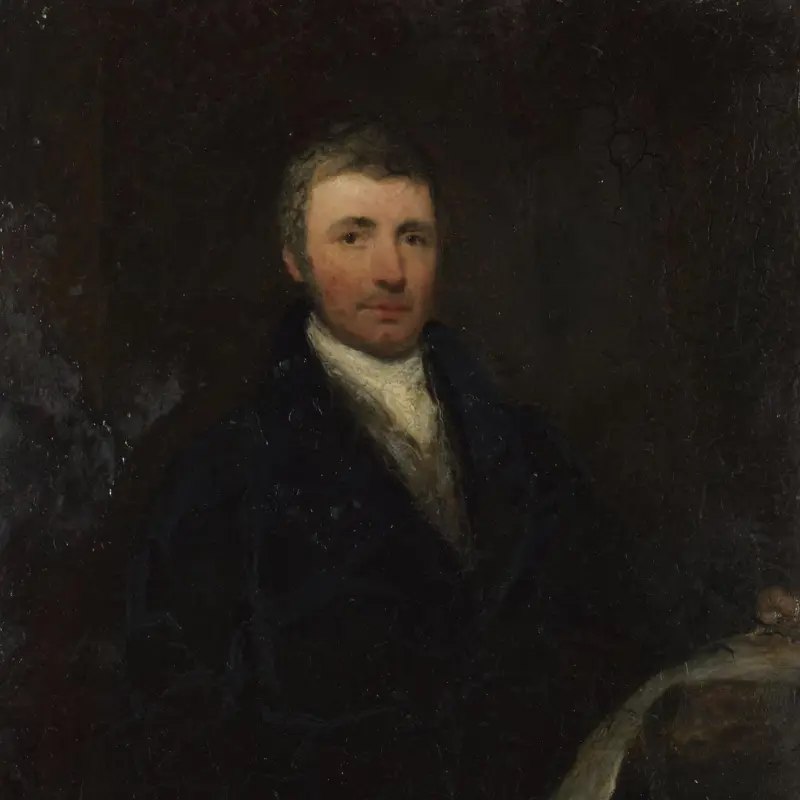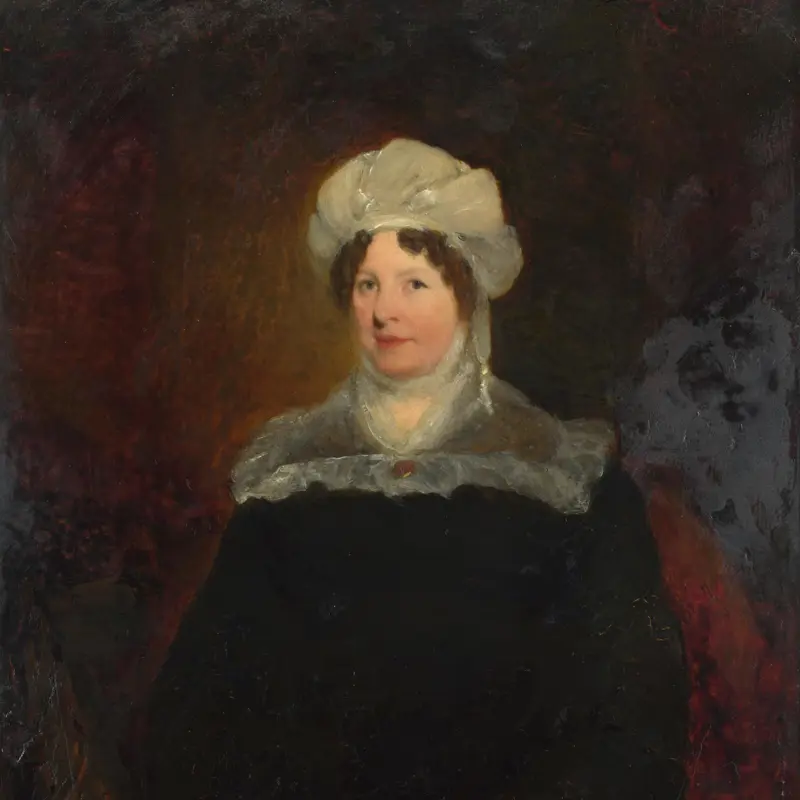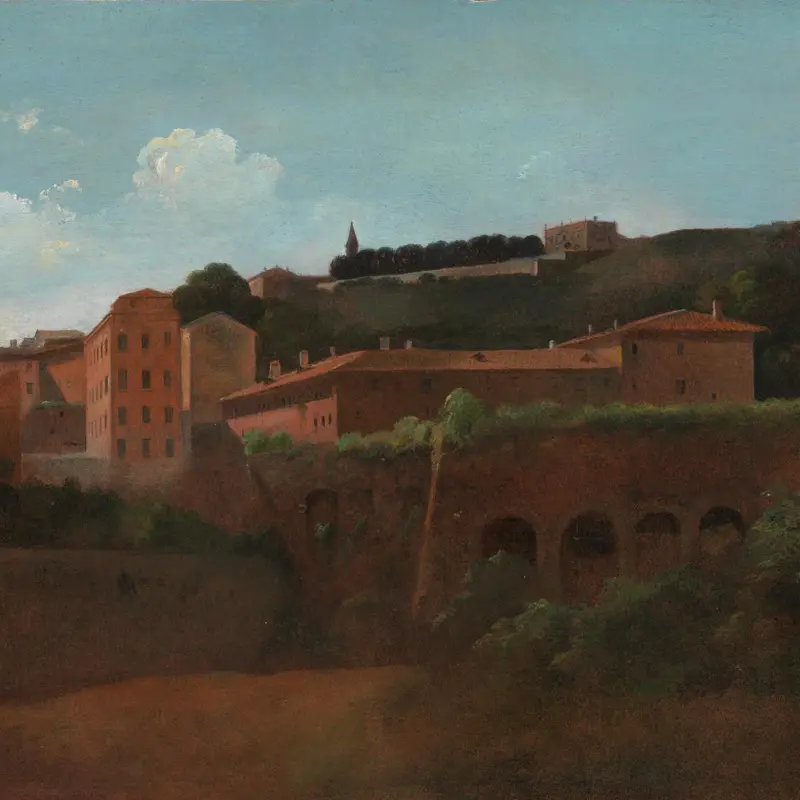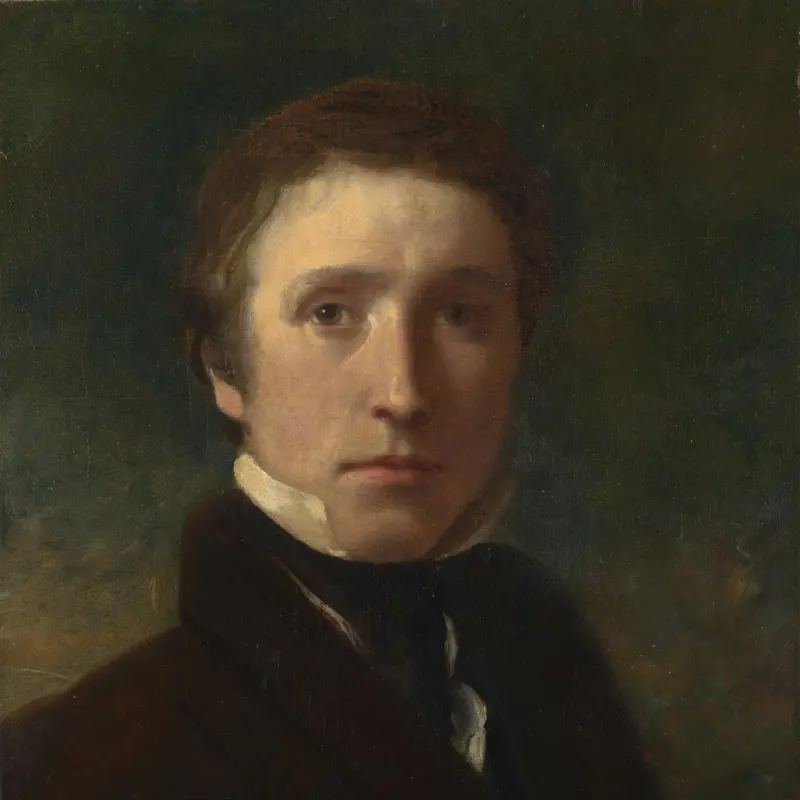British, possibly Sir William Boxall, 'Portrait of a Man aged about 45', about 1830
About the work
Overview
This painting and Portrait of a Woman aged about 45, also in the National Gallery, were designed to hang together as portraits of a husband and wife. They are said to have been given by the painter Sir William Boxall RA, director of the National Gallery from 1865 to 1874, to his friend, the architect James Wyatt RA (1746–1813). Wyatt’s great-grandson, H.W. Standen, presented them to the National Gallery in 1964 as a ‘Self-Portrait of William Boxall and a companion portrait of his wife’. However, the features in the male portrait are unlike those in Boxall’s Self Portrait aged Nineteen, also in the National Gallery’s collection, and he never married. It is now thought more likely that this is an early portrait by Boxall of his father. The companion female portrait probably shows Boxall’s mother.
Key facts
Details
- Full title
- Portrait of a Man aged about 45
- Artist
- British, possibly Sir William Boxall
- Artist dates
- 1800 - 1879
- Part of the series
- Portraits of a Man and a Woman
- Date made
- About 1830
- Medium and support
- Oil on wood
- Dimensions
- 30.5 × 24.6 cm
- Acquisition credit
- Presented by H.W. Standen, 1964
- Inventory number
- NG6352
- Location
- Not on display
- Collection
- Main Collection
- Previous owners
Provenance
Additional information
Text extracted from the National Gallery’s Annual Report, ‘The National Gallery: June 1962 – December 1964’.
Bibliography
-
1965The National Gallery, The National Gallery: June 1962 - December 1964, London 1965
-
2001
C. Baker and T. Henry, The National Gallery: Complete Illustrated Catalogue, London 2001
About this record
If you know more about this work or have spotted an error, please contact us. Please note that exhibition histories are listed from 2009 onwards. Bibliographies may not be complete; more comprehensive information is available in the National Gallery Library.
Images
About the series: Portraits of a Man and a Woman
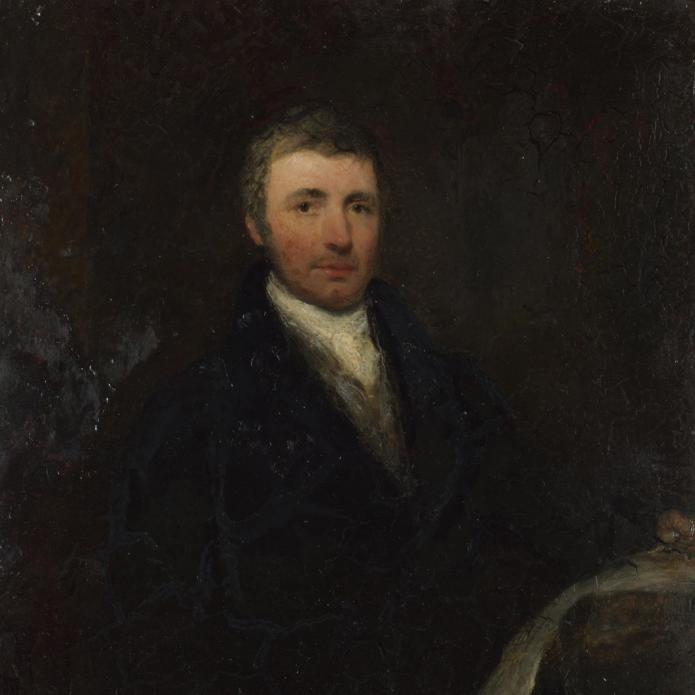
Overview
These two pictures, both painted in oil on board, were designed to hang together as portraits of a husband and wife. They are said to have been given by the painter Sir William Boxall RA, director of the National Gallery from 1865 to 1874, to his friend, the architect James Wyatt RA (1746–1813). Wyatt’s great-grandson, H.W. Standen, presented them to the National Gallery in 1964 as a ‘Self-Portrait of William Boxall and a companion portrait of his wife’. However, the features in the male portrait are unlike those in Boxall’s Self Portrait at the Age of Nineteen, which is also in the National Gallery, and he never married. It is now thought more likely that these are early portraits by Boxall of his parents.

